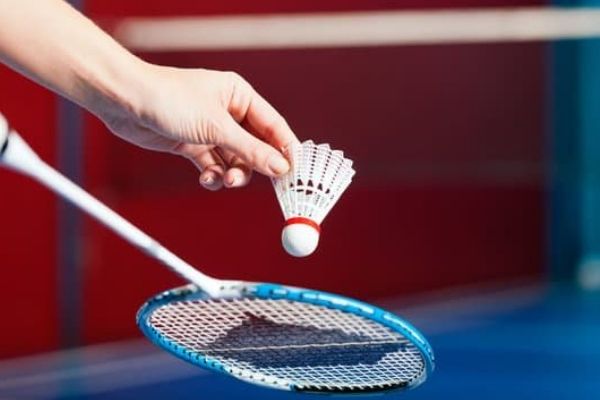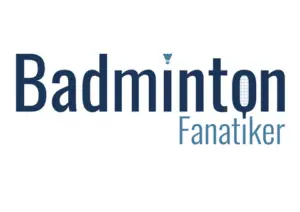I do play badminton every morning with my friends. But, I wasn’t serving correctly, and hence, I was giving away a significant advantage to my opponents all the time.
To change my luck completely, I decided to learn how to execute the perfect low serve in badminton. I did some research watching several videos from the experts and practicing what they teach. I want to share what I’ve learned in this article.
If you struggle to execute the perfect low serve while playing badminton, I hope this article will help you.
What Is A Low Serve In Badminton?
There are a few different types of serves in badminton. I’m discussing only low serve in this article. If you want to check the different types of serves in badminton, you can read this article.
Let’s see what a low serve in badminton is. We use a low serve when we want to deliver the shuttle near the opponent’s service line. A serve in which the shuttle moves just above the net can be considered a great serve.
The shuttle reaches its maximum height when it is just above the net and dips down to land just behind the service line in the opponent’s half. If the maximum height of the serve is far greater than the net height, the opponent will get a chance to move forward and smash it to your half.
Take a look at the following image to understand the trajectory of a perfect low serve in badminton.


How To Do The Perfect Low Serve?
I hope you’ve understood what a low serve is in badminton. Now, let’s learn to execute the perfect low serve so that you’ll get the maximum advantage to attack your opponent out of the rally.
You can execute a low hand serve by using either forehand or backhand.
Backhand Low Serve In Badminton
The back-hand low serve is the typical way of serving in badminton, especially in doubles. Players use this in doubles to prevent the opponents from gaining control of the attack, as the doubles game is all about attacking play. It is also a great serve to use in the singles game.

While you perform the back-hand low serve, make sure the shuttlecock is 1.5 m above the surface of the court. Otherwise, it will be a breaking of the service rules.
Let’s see how you can execute a backhand low serve correctly in badminton.
- Stand in the front corner of the service court (just behind the service line)
- Using your fingers gently, hold the cock facing its head downwards
- Move the racquet forward to hit the shuttle and release the shuttle at the same time
- Push your thumb forward in the direction to which you want the shuttle to land
It’s better to watch a video to understand the whole process in the right way. Take a look at the following video and learn the steps to execute a backhand serve in badminton.
If you’ve learned how to execute the perfect backhand low serve, now, let’s move on to the fore-hand low serve.
Forehand Low Serve In Badminton
The forehand low serve is not much often used as the backhand low serve. However, it is a great shot to have in your arsenal if you want to prevent your opponent from attacking right away.

If you learn the basics correctly, you can execute the forehand low serve pretty easily.
Let’s see how to execute a forehand low serve in badminton:
- Stand just behind the service line (front-corner of the service court)
- Hold the shuttlecock by the feathers in the right way by using your fingers gently. The cork head (cork base) must be facing downwards.
- When you release the shuttle, move your racquet forward and push your thumb forward to the exact direction you want the shuttle to land
- The power behind the serve is generated mainly from the slight movement of the wrist and the push of the thumb.
Watch the following video to perform a forehand low serve correctly. Make sure you understand the basic concepts, especially the position of your feet, the way to hold the racquet and shuttle, and releasing of the shuttle in the right way.
Why Should You Learn The Low Serve?
Why should you learn to execute the perfect low serve? Well, Nobody wants to give away the attack to the opponents. If you do not serve correctly, it will be very easy for the opponent to take the attack on you. Hence, it can be difficult for you to gain control of the rally back from that position.
Executing the low serve is highly important in doubles. If you can perform the low serve correctly, the opponents won’t have a chance to hit you back in attack. Hence, you can expect a non-attacking return from the opponent and gain control of the rally.
How To Improve Your Low Serve?
If you want to improve your low serve and make it perfect, there’s no other way than practicing. I suggest you practice this a lot to get a feel for the right positions, movement of the racquet and shuttle, amount of force required, and follow-through.
It takes time to make it perfect. Try hitting the low serve again and again when you do the practice. Once you make it good, use it when you play against your friends. It won’t be perfect for several times.
You might overhit the shuttle or hit it without enough power and lose some points. But don’t worry. Keep doing it again and again until you get it right. Once you hit a few serves correctly, you’ll get the confidence to repeat the low serve more often, and eventually, you’ll make it perfect.
It requires practice and a lot of patience to gain any skill in sports. The more you practice this shot, the better you’ll learn it. When you master this serve, you’ll be able to get control of the rally and take the attack to your opponents.
How To Return A Low Serve?
Now you know how to execute the perfect low serve. But what if your opponent hits an excellent low serve to your court. How can you return a good-quality low serve? Let’s see how you can do that.
If the opponent’s low serve is perfect, it is pretty difficult for you to start attacking the shuttle right away. In that case, one of the best things you can do is to lift the shuttle back to the backhand corner of your opponent’s half.
If the opponent is not so strong with the backhand, which most people aren’t, you can expect a weak reply from your opponent and gain control of the rally.
But at times, this tactic won’t work if your opponent is strong with the backhand. In that case, I would recommend you read this article to learn how to return a low serve in some other ways.
Final Thoughts
The low-hand serve in badminton is one of the most important shots in the game, if not the most important. Mastering this serve will give you a great advantage in most of the rallies you play.
If you’ve learned the fundamental concepts to execute a low serve, now go and practice it. I’m pretty sure that you’ll be able to master this skill quickly. Check out this article to learn how to return a high serve in badminton.
I hope this article was helpful to you. If it was helpful, do share it so that others can find it.
Thanks for reading 🙂
